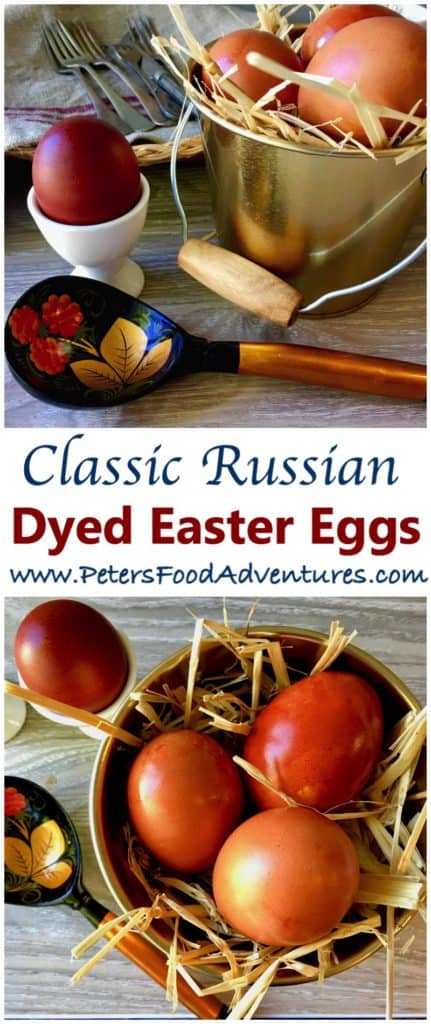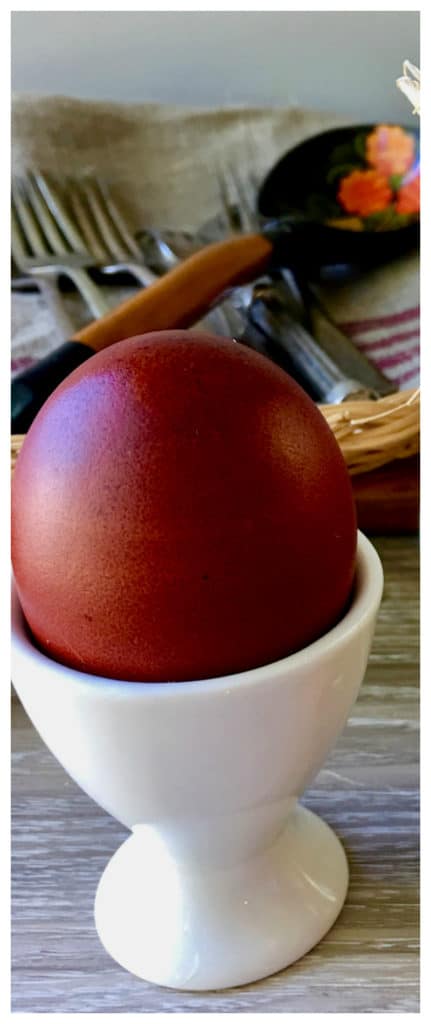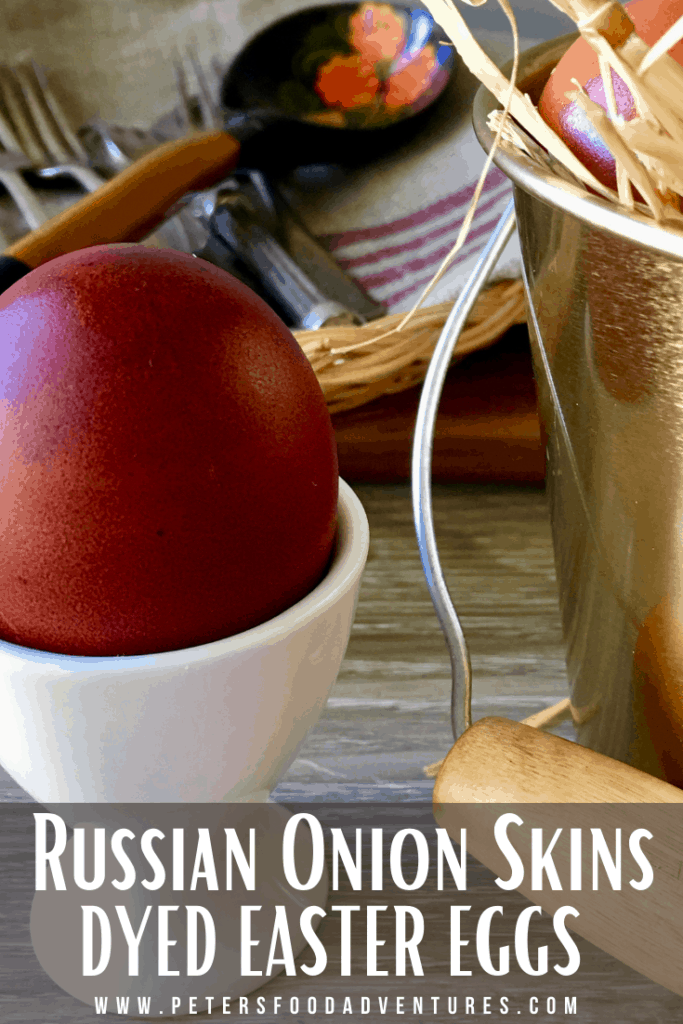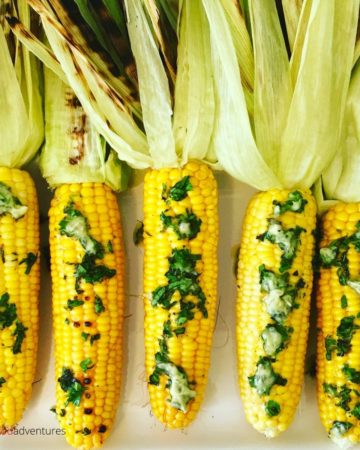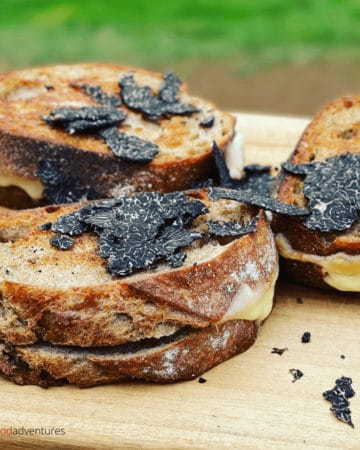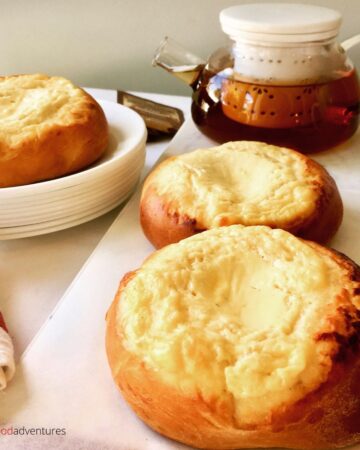It's easy to make naturally dyed Red Easter Eggs, a wonderful Orthodox tradition. Made without any harmful dyes, dying eggs with onion skins is a great Easter activity the kids will love to make. You'll love these natural Blue Easter Eggs too!
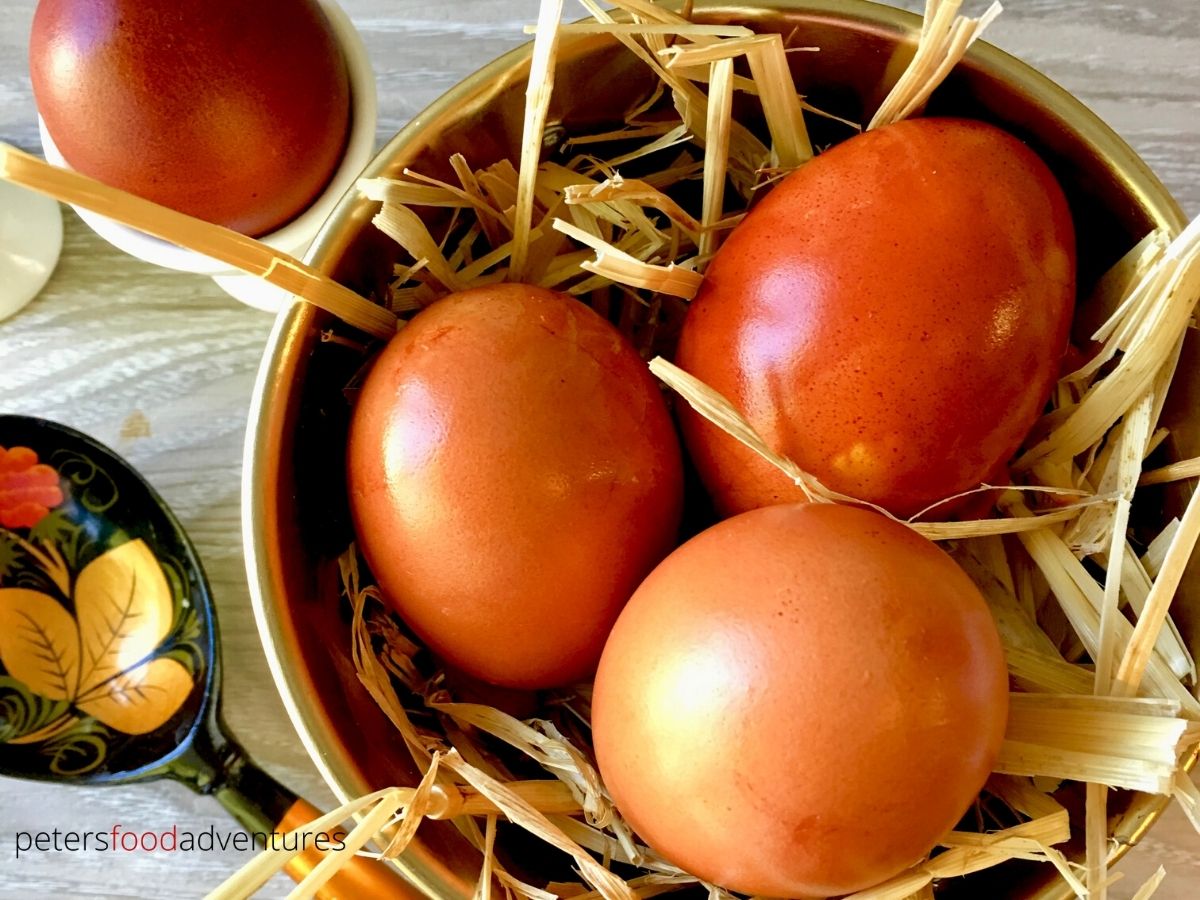
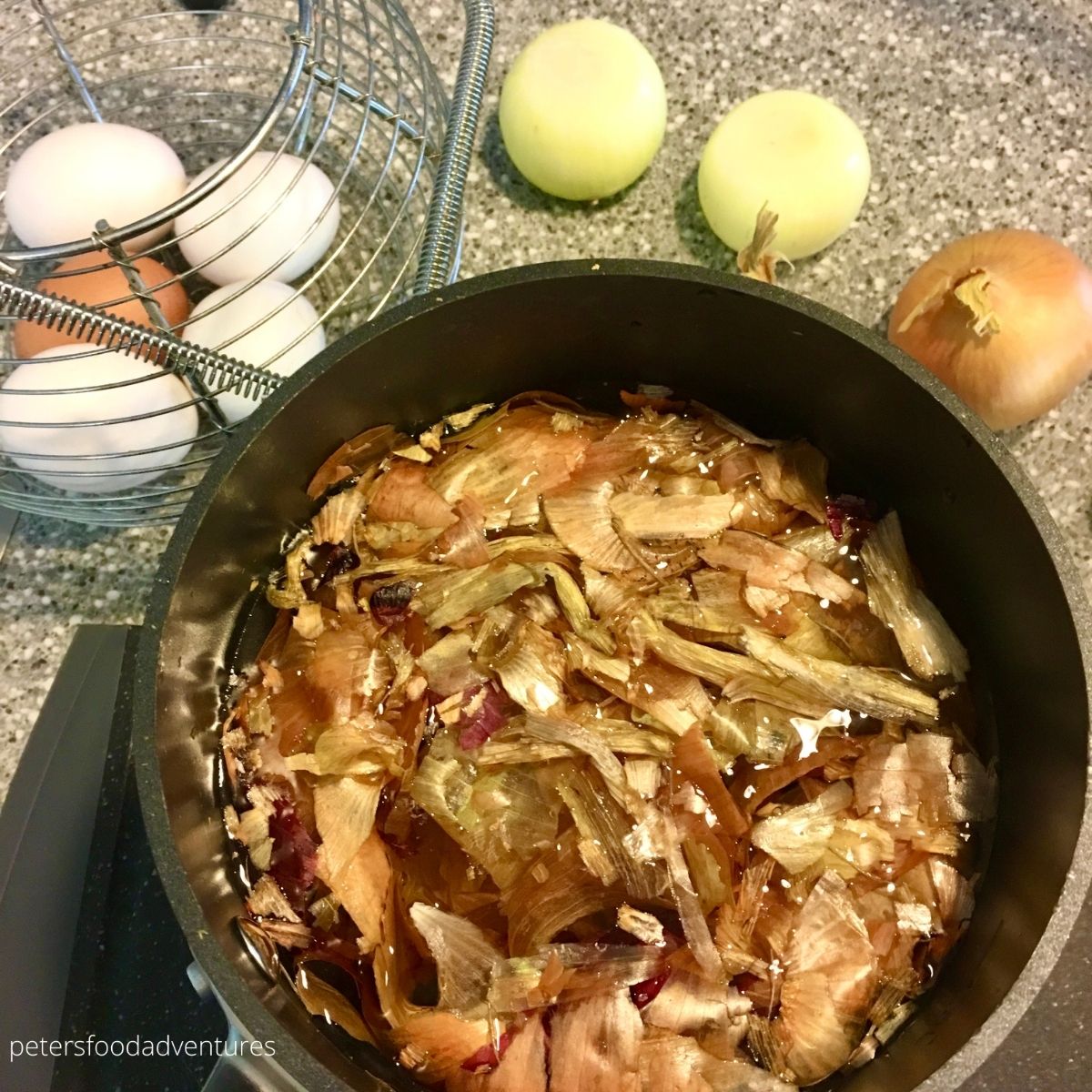
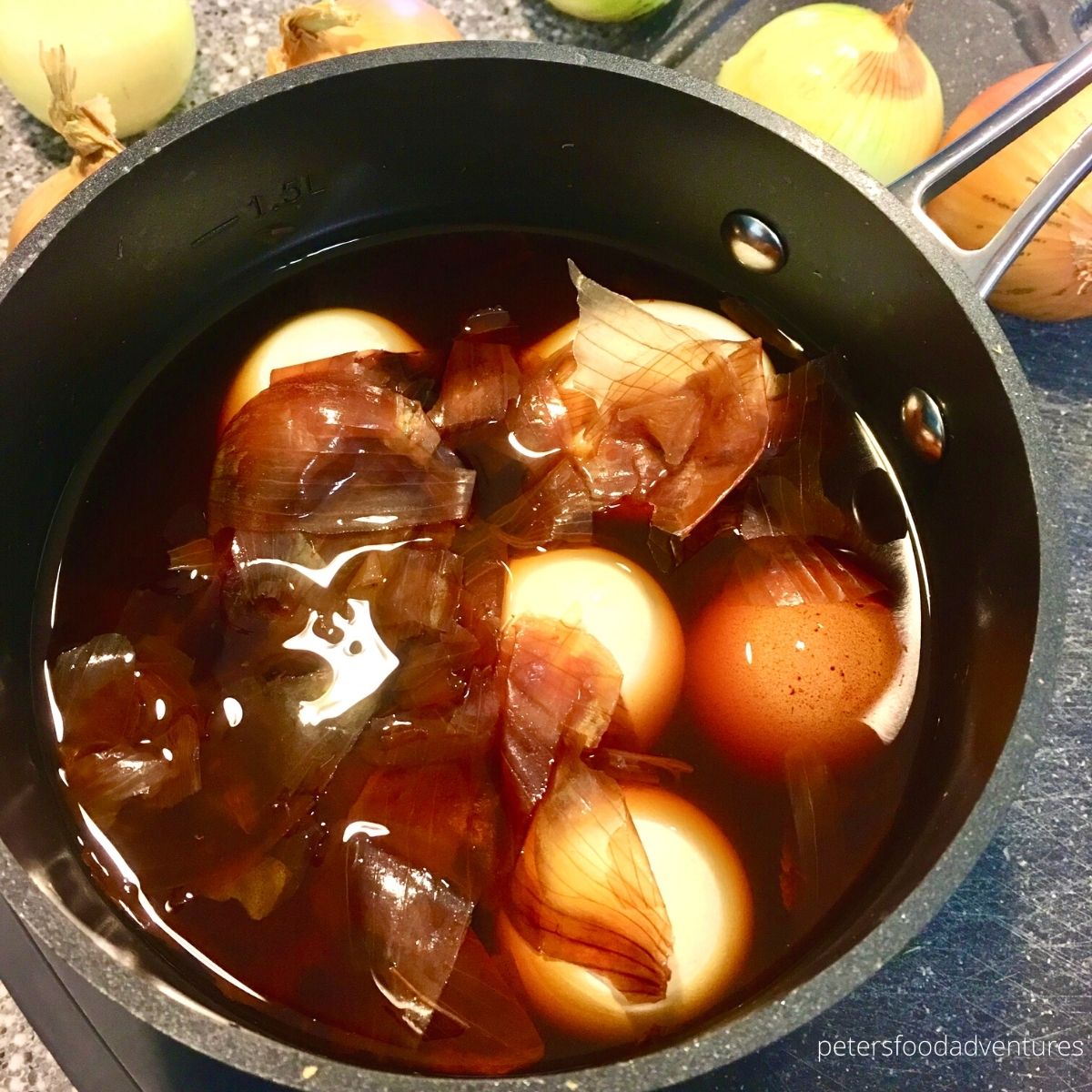
Easter Orthodox Tradition
It wouldn't be Easter without coloring Easter Eggs. Red Easter eggs are popular in Orthodox countries like Russia, Greece, Ukraine, Moldova, Serbia, Georgia, Slovak, Armenia, and former Soviet states.
Red Easter Eggs symbolize the blood of Christ, and the hard egg shell symbolizes the tomb of Christ. When dying eggs with onion skins, the colors usually range from dark orange, brown to a rusty red eggs.
Traditionally we take turns trying to crack each others boiled Easter eggs. One person holds the egg and the other taps the top of their egg, hoping not to break their own, but their opponents. The winner is the person who successfully cracks their opponents egg.
The cracked egg symbolizes Christ's resurrection from the tomb. As we celebrate Russian Easter, we greet each other with Христос воскрес (Christ is Risen) to which we reply Воистину воскрес (He is Truly Risen).
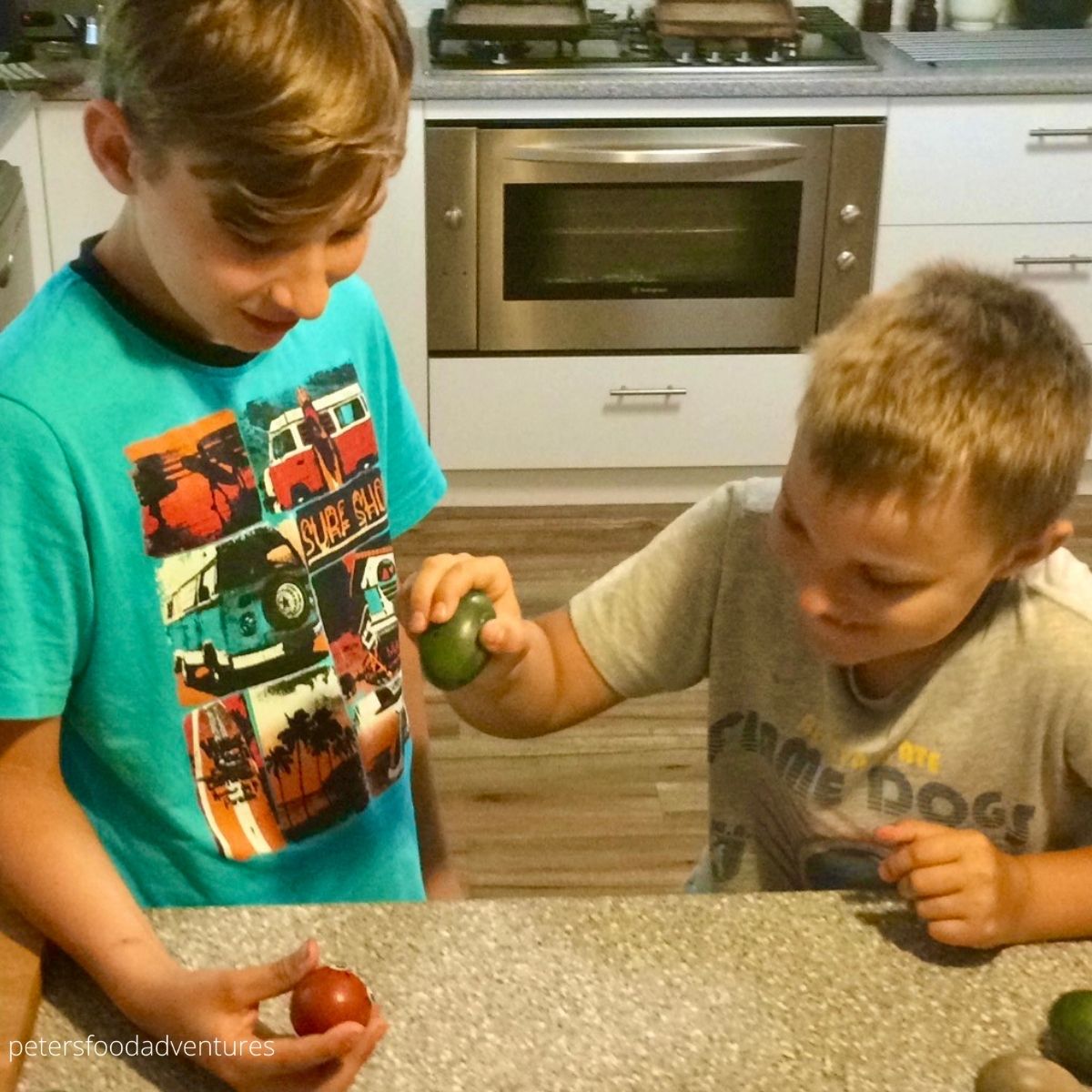
Dying Eggs with Onion Skins
The hardest part of this recipe is collecting the yellow onion skins! I usually buy a big bag and start saving early. It's easy to peel the onion skins, and you only need them from about 10 onions.
- Place onion skins and water in a saucepan
- Bring to a boil for 15-30 minutes and allow to cool to room temp
- Place eggs into saucepan, bring to boil for 10 minutes. Cover with lid and allow to cool in onion dye.
- Remove eggs with slotted spoon when you're happy with the colors
- For deeper Red Easter Eggs, keep the eggs in onion dye in fridge overnight (the long the eggs sit in natural dye, the deeper and darker the colors will be)
- Keep eggs refrigerated until you're ready to serve
Patterns on Easter Eggs
There are Slavic traditions to have patterns on your onion skin Easter Eggs. You can use wax to write or draw on the eggs before boiling them. Most commonly people use plant leaves, flat parsley or small flowers to leave a pattern. You'll need old pantyhose for this pattern method to work. You can even tie rubber bands around eggs to make linear patterns.
- Place the leaf or flowers around the egg
- Tighten the stocking over the flower and egg and tie it tightly with a string
- Boil in a pot with onion skins as per instructions below
- Carefully remove the stocking and leaves to reveal the patterns
- Take care not to scratch the egg as dye isn't fully set
White or Brown Eggs for Easter Eggs
The color of your Red Easter Eggs will vary based on what eggs you use. White eggs will give you most brightest red color. Brown eggs will make a deep red/brown Easter eggs. Use both for a variation of colored eggs.
White eggs are very hard to find in Australia. You'll need to plan ahead to source them as they aren't sold in supermarkets. I bought chickens that lay white eggs just for this recipe! 🤣
Easter Eggs Recipe Tips
- If you are in a hurry, place all the ingredients in a sauce pan and boil for about 30 minutes. Allow to cool in pot for color to set.
- Add a tablespoon of vinegar with the water to allow dye to set better
- Placing cold eggs in hot water causes them to crack. Place them in warm water to warm them up before placing them in the hot onion water. This reduces the likelihood of cracked eggs.
How to Make Easter Eggs Brighter
Naturally Dyed Easter Eggs can sometimes be dull and matte in color. To make bright Easter Eggs all you need is oil. Place a few drops of vegetable oil in the dyed egg and rub with a paper towel. When serving, you'll get a nice shiny egg that will contrast your natural eggs on the table.
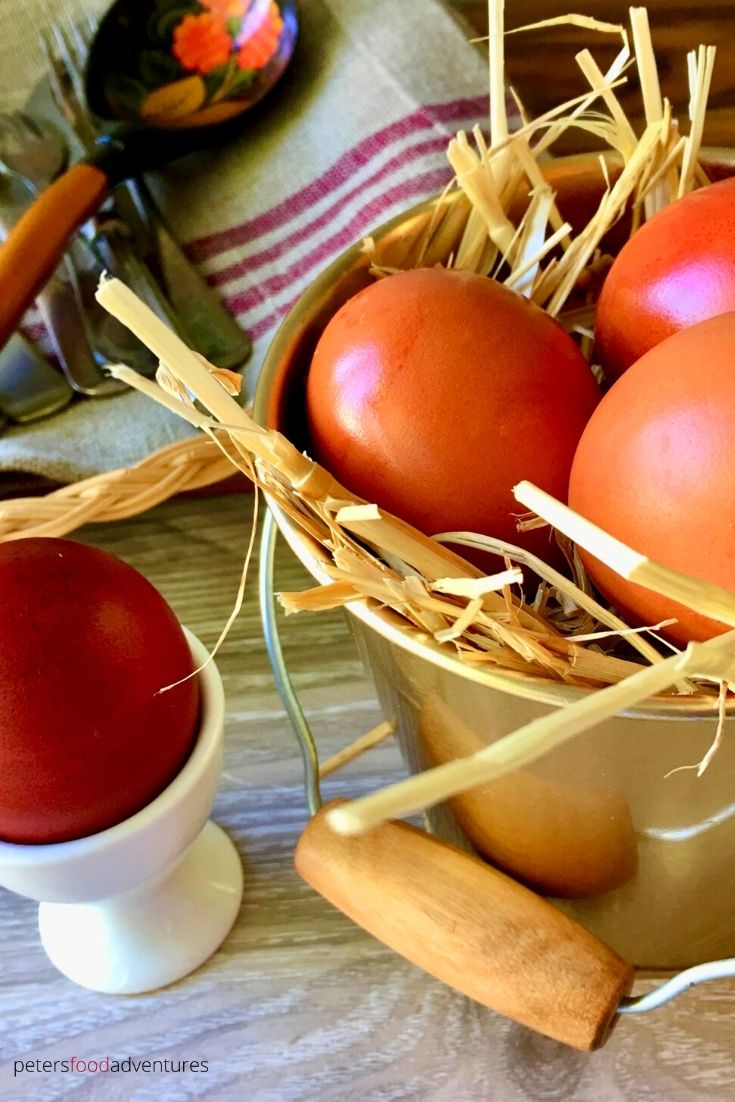
How Long Do Easter Eggs Last?
Hard boiled Easter Eggs should last for 1 week if kept in the refrigerator. When placing on the table to serve, the government guidelines are to be kept out for only 2 hours to be safely eaten.
Eating Dyed Easter Eggs
These Easter Eggs aren't just for decoration, you eat them of course! Remember to keep the dyed eggs refrigerated until serving. It seems wasteful to make Easter Eggs and not to eat them! Here's some ideas how to use dyed Easter Eggs.
- Enjoy them peeled with a pinch of salt
- Olivier - Russian Potato Salad
- Smoked Salmon Layered Salad (Shuba)
- Add eggs to your Caesar Salad
- Mimosa Layered Tuna Potato Salad
- Slice it over your avocado on toast
- Make a classic Egg Salad sandwich
It's a great chemical free way to celebrate Easter. Naturally dyed Easter eggs are the healthiest way to make Easter eggs. Bon Appetit! Приятного аппетита!
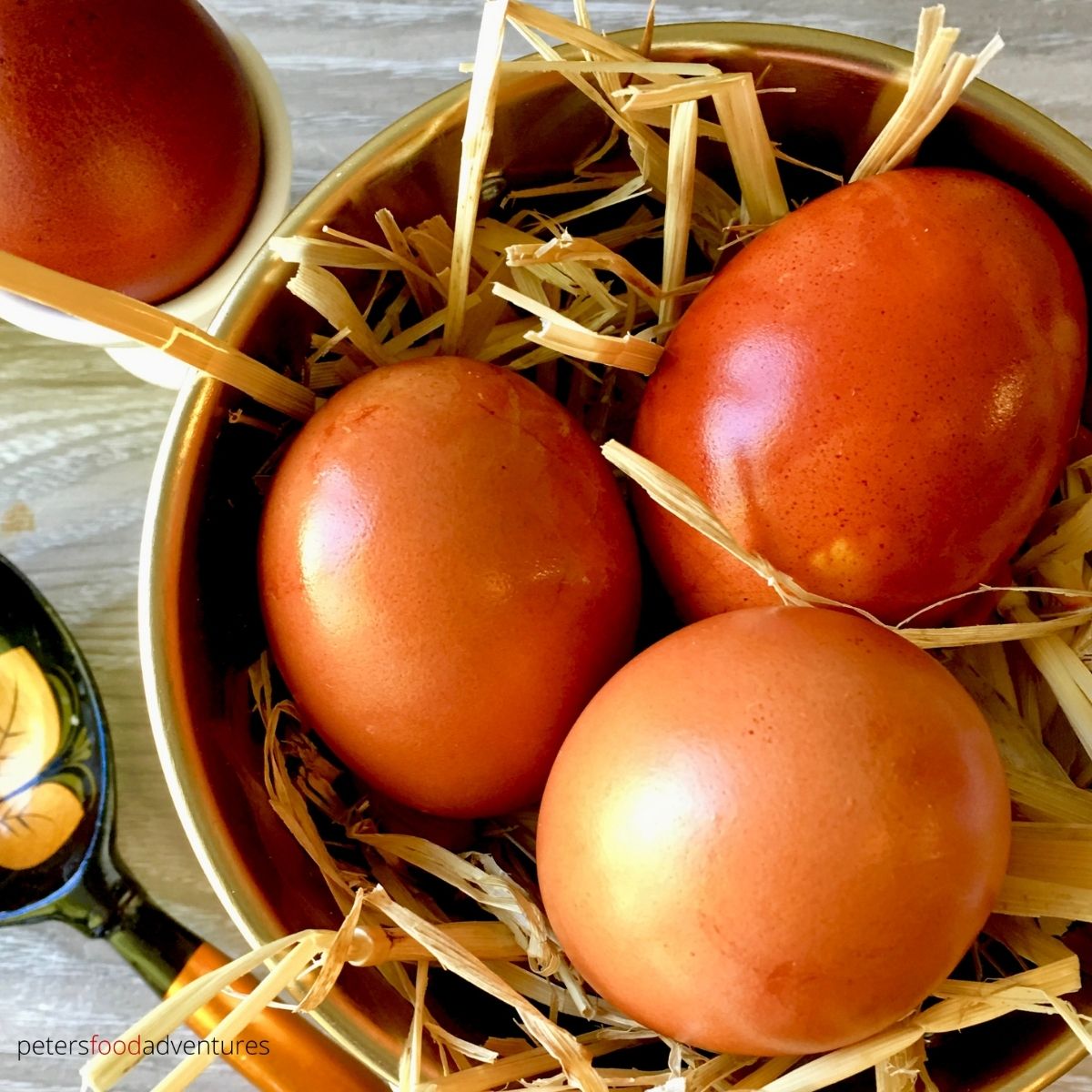
Ingredients
- onion peels from 12 yellow onions fill pan with onion skins
- water to cover the onion peels and eggs
- 1 dozen uncooked eggs room temperature
Instructions
- Place the onion peels and water into a saucepan and bring to a boil for about 15-30 minutes.
- Allow to cool to around room temperature. Place room temperature eggs inside the saucepan with the onion peels. Ensure eggs are fully covered with water (add more if needed).
- Bring to a boil and cook eggs in onion dye for about 10 minutes. Cover with lid and allow eggs to cool inside the pan. For a deeper color, keep eggs in the mixture overnight in the fridge.
- Remove with a slotted spoon and allow to dry.
- Gently rub the eggs with a bit of cooking oil for a nice shine. Keep the eggs refrigerated until you are ready to eat them on Easter morning.
Video
©PetersFoodAdventures.com
